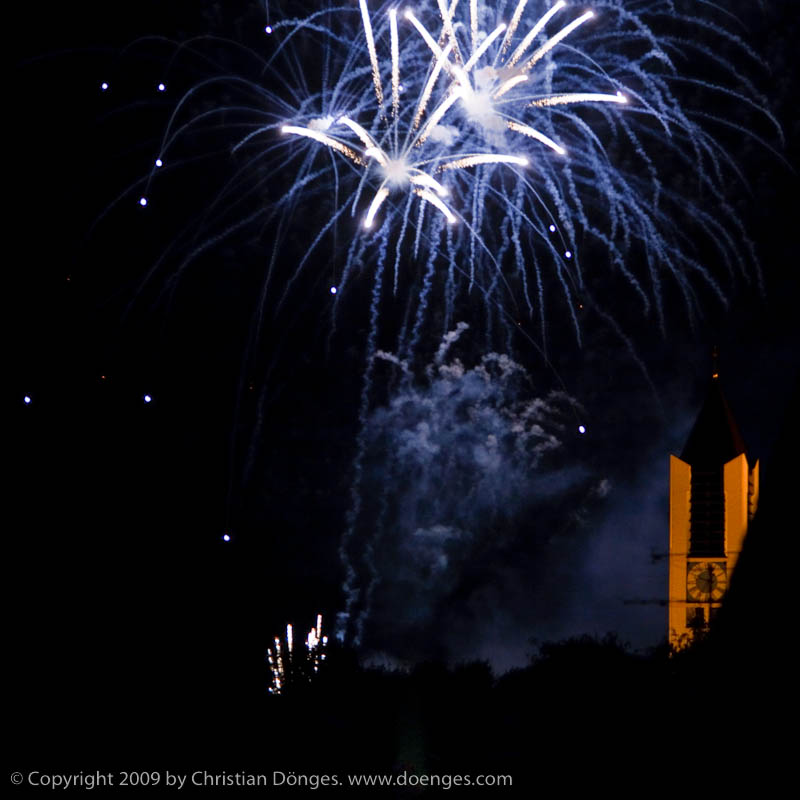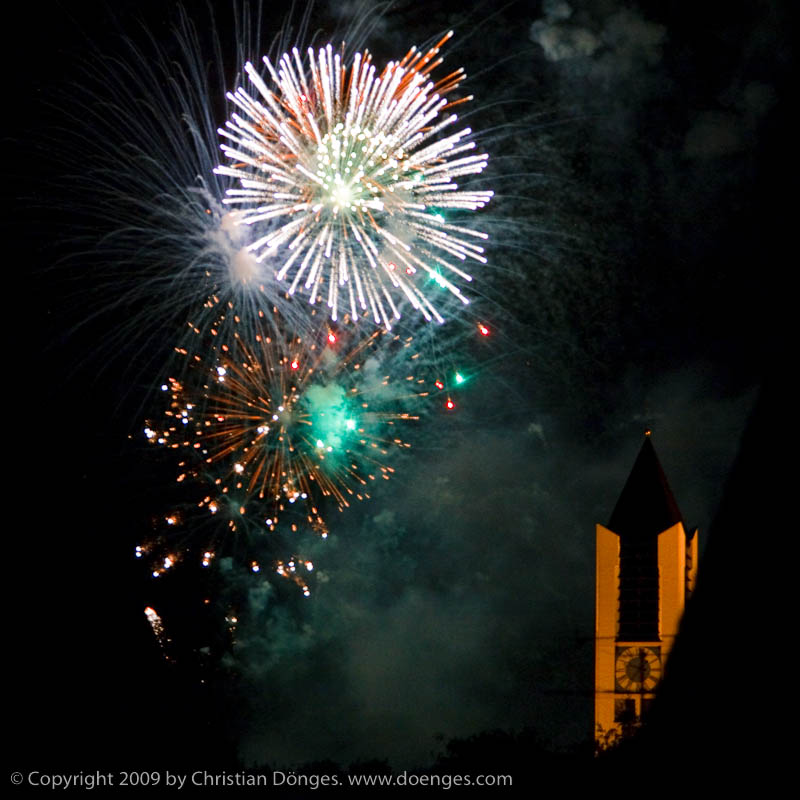Freising is having it's 80th annual fall fair this year and the town celebrated the last day today with some spectacular fireworks:
[caption id="" align="aligncenter" width="600" caption="Blue Fireworks over Church Tower."]

[/caption]
In case you are wondering, it is actually quite easy to make this kind of photo if you know what you are doing:
- Set your camera on a tripod and use a cable release or a remote control (infra red remote, RadioPopper, PocketWizard, you name it) to trigger the exposure. I use a simple remote control cable.
- Turn off the auto-focus and manually focus the camera (usually to infinity). This is faster and more reliable than having the AF hunt the night sky.
- Crank up the ISO as far as you are willing to live with the noise. For example, on a Canon 5D, ISO 800 is great and ISO 1600 is acceptable. A Nikon D3X will go even higher, as will a Canon 5D mark II. A pocket digicam will probably struggle at ISO 400 and above. Experiment - preferably before the big event.
- Use manual exposure mode and open the aperture as wide as it will go.
- Still in manual exposure mode select a good exposure time. I find that between 1/125s and 1/8s works well.
- Expose at will and enjoy the show!
[caption id="" align="aligncenter" width="600" caption="Green Fireworks over Church Tower."]

[/caption]
I usually use the camera screen to judge exposure. That is, I set the aperture wide open and shoot at whatever exposure time I have guessed. Usually 1/60s is a good place to start as any.
It is normal to see some blown highlights in the middle of the explosions and at the back of the rocket engines. Because of this the histogram and the blinkenlights are useless. Instead, ensure that the night sky is black and that the fireworks are clearly visible.
If the sky is too light, shorten exposure time and/or reduce the ISO. Similarly, if the fireworks are too dark, lengthen exposure time and/or increase the ISO.
Once I have set up the exposure correctly I point the camera at a likely section of sky and snap away. Since the exposure will not change, I only change it to get a different effect. There is no need to check every image.
In fact, I simply snap away until either the fireworks stop or I grow tired of taking pictures. It's a good idea to have some spare batteries and memory cards on hand ...
That's it. Have fun!



 [/caption]
[/caption] [/caption]
[/caption] [/caption]
[/caption]